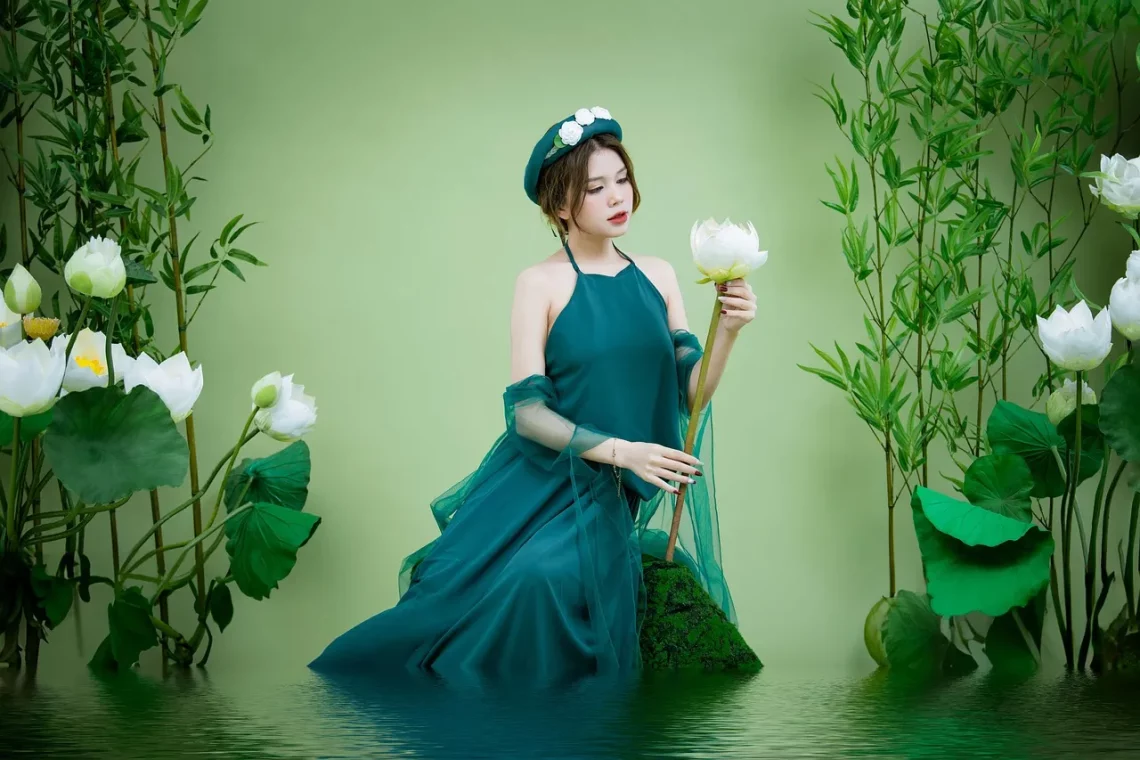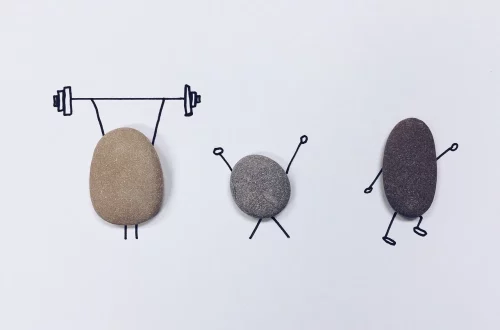
The Allure of a Square Jaw: Defining Beauty and Confidence
The concept of beauty has long been a subject of fascination, evolving through ages and cultures, yet one feature remains timeless in its appeal: the square jaw. This striking facial structure is often associated with strength, confidence, and a certain rugged charm. Throughout history, various cultures have celebrated prominent jawlines, linking them to ideals of masculinity and femininity. In contemporary society, a square jaw has become a sought-after trait, often seen in models, actors, and influencers, making it synonymous with attractiveness and success.
The allure of a square jaw transcends mere aesthetics; it embodies a sense of self-assurance and resilience. People with this facial feature are often perceived as more authoritative and dependable. The relationship between a square jawline and confidence is not just a matter of perception; studies suggest that physical attributes can significantly impact how we view ourselves and how others perceive us. This dynamic interplay between beauty, confidence, and societal expectations raises intriguing questions about the standards we hold and the lengths to which individuals might go to achieve these ideals.
As we explore the multifaceted nature of the square jaw, we will delve into its historical significance, its cultural implications, and how it plays a role in modern beauty standards. Ultimately, understanding the allure of a square jaw can provide deeper insights into our collective psyche regarding beauty and confidence.
The Historical Significance of the Square Jaw
The square jaw has a rich history that can be traced back to ancient civilizations. In many cultures, a strong jawline was admired and often associated with power, nobility, and leadership. For instance, in ancient Rome, statues and portraits of emperors often highlighted their prominent jawlines, symbolizing their authority and strength. This association has persisted throughout history, influencing various art forms and societal standards.
In the Renaissance period, artists like Leonardo da Vinci and Michelangelo accentuated facial features, including strong jawlines, in their masterpieces. This portrayal of strength and beauty was not just an aesthetic choice; it reflected the values of the time, which emphasized the importance of the human form. The square jaw became a representation of ideal beauty, one that was both powerful and alluring.
Moving into the modern era, the square jaw has retained its significance in the realms of cinema and fashion. Icons such as Clark Gable and Marilyn Monroe showcased the desirability of this feature, solidifying its status in popular culture. In Hollywood, the square jaw has often been linked to leading roles, portraying characters with confidence and charisma. This trend continues today, with many contemporary celebrities embracing their strong jawlines as part of their unique appeal.
Moreover, the rise of social media has amplified the focus on physical appearance. Influencers and models with square jawlines often gain significant followings, reinforcing the notion that this feature is synonymous with beauty and desirability. The historical admiration for the square jaw highlights how deeply entrenched these ideals are in our culture, making it a timeless symbol of allure and confidence.
Cultural Perceptions of Beauty and Confidence
Cultural perceptions of beauty are diverse and often contradictory, yet the square jaw holds a unique position across various societies. In many cultures, a strong jawline is equated with masculinity, strength, and leadership. For men, a square jaw can enhance their attractiveness and is often associated with traditional notions of masculinity. This connection is so profound that many men seek cosmetic procedures to achieve a more pronounced jawline, a testament to the lengths individuals may go to conform to societal standards.
Conversely, for women, the perception of a square jaw can be more complex. While some may view it as a sign of strength and confidence, others may associate it with a more masculine appearance. This dichotomy can lead to mixed feelings about one’s own facial features. In some cultures, a softer jawline is preferred, seen as more feminine and delicate. This societal pressure can create a paradox where women with square jaws may feel the need to soften their appearance to fit into established beauty norms.
Furthermore, the square jaw often intersects with issues of identity and self-expression. In cultures that celebrate diversity and individuality, a square jaw can become a symbol of uniqueness and empowerment. People are increasingly embracing their distinct features, challenging the conventional beauty standards that have dominated for centuries. This shift is encouraging individuals to find confidence in their appearances, regardless of whether they conform to traditional ideals.
The cultural significance of the square jaw is not static; it evolves as societal values change. As discussions around beauty become more inclusive, the square jaw’s allure may transform from a narrow definition of attractiveness to a broader celebration of diverse facial structures. Ultimately, the relationship between beauty and confidence is deeply intertwined with cultural perceptions, shaping how individuals view themselves and their place in the world.
The Psychological Impact of Facial Features on Self-Perception
The psychological impact of facial features on self-perception is profound, and the square jaw is no exception. Research indicates that physical appearance plays a crucial role in shaping our self-esteem and confidence levels. Individuals with a square jawline may experience heightened self-confidence due to societal perceptions linking this feature with strength and assertiveness.
Studies have shown that people often make snap judgments based on facial features, which can significantly influence how they are treated in social and professional settings. Those with prominent jawlines may be perceived as more competent and trustworthy, leading to positive reinforcement of their self-image. This feedback loop can enhance one’s confidence, creating a cycle where physical appearance and self-esteem mutually reinforce each other.
However, the pressure to conform to beauty standards can also lead to negative self-perception. Individuals who do not possess a square jaw may feel inadequate or less attractive, which can affect their mental health. The obsession with achieving an idealized appearance can lead to anxiety, body dysmorphia, and other psychological challenges. It is essential to recognize that beauty is subjective, and the value of an individual extends far beyond their physical features.
In recent years, there has been a growing movement towards body positivity and self-acceptance. This shift encourages individuals to embrace their unique features, including square jaws, as part of their identity. By fostering a culture that values diversity in beauty, we can help combat the negative effects of societal pressures and promote a healthier self-image for everyone.
Ultimately, the psychological implications of facial features, including the square jaw, highlight the intricate relationship between beauty and self-confidence. Understanding this connection can lead to greater empathy and acceptance, paving the way for a more inclusive definition of beauty.
Beauty Standards in the Age of Social Media
In today’s digital age, social media has dramatically reshaped beauty standards, amplifying the allure of certain facial features, including the square jaw. Platforms like Instagram and TikTok showcase influencers and models who often embody these ideals, creating a visual culture that celebrates specific aesthetics. The result is a heightened awareness of physical appearance, compelling many to strive for similar features.
The prevalence of filters and photo editing tools has further complicated this landscape. Users can easily modify their images to enhance their jawlines and create the illusion of a more chiseled face. While this can boost confidence in the short term, it also sets unrealistic standards for beauty, leading to dissatisfaction with one’s natural appearance. The phenomenon of “Instagram face” highlights how digital manipulation can warp our perceptions of beauty, distancing individuals from their authentic selves.
Moreover, the pressure to conform to these standards can lead to an increase in cosmetic procedures aimed at achieving a square jawline or other desirable features. Many individuals, feeling inadequate compared to the curated images they see online, may opt for surgical or non-surgical enhancements. While these procedures can enhance self-esteem for some, they also raise ethical concerns about the normalization of cosmetic surgery and the potential psychological ramifications of pursuing an idealized appearance.
Despite these challenges, social media also offers a platform for body positivity and self-acceptance movements. Influencers who embrace their unique features, including square jaws, can inspire others to celebrate their appearances. By promoting authenticity and diversity, these voices challenge conventional beauty norms and encourage individuals to redefine what beauty means to them.
As social media continues to evolve, so too will the conversation surrounding beauty standards. The square jaw, once a hallmark of traditional attractiveness, can be reimagined within a more inclusive framework that values individuality and self-expression. Ultimately, the allure of a square jaw can serve as a catalyst for broader discussions about beauty, confidence, and self-acceptance in our increasingly digital world.
In conclusion, the allure of a square jaw encompasses historical, cultural, psychological, and social dimensions. Understanding these aspects provides valuable insights into our perceptions of beauty and the complexities surrounding confidence. As we navigate the shifting landscape of beauty standards, embracing diversity and promoting self-acceptance will be crucial in redefining what it means to be beautiful.
*Disclaimer: This article is for informational purposes only and should not be considered medical advice. If you have health-related questions or concerns, please consult a qualified healthcare professional.*




